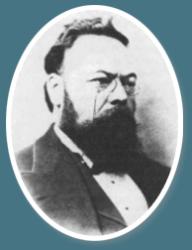I must pass over the various kinds of cataract, except just giving a list of them from Tetzer; their names are to some extent descriptive of them. They are: Cataracta accreta, aridosiliquata, capsularis, complicata, corticalis, cystica, fluida, glaucomatosa, gypsea, hypermatura, immatura, incipiens, intumescens, lactea, lenticularis, matura, membranacea, Morgagni, nigra, nucleolaris, perinuclearis, polaris, pyramidalis, secundaria, simplex, spuria, traumatica, and zonularis.
It must be obvious that many of these varieties can only be recognized after the cataract has been extracted, so they will help us but very little in a therapeutic sense.
I will revert to the Hahnemannic pathology subsequently.
I have thus stated how I came to believe in the possibility of curing cataract with medicines; then I have brought together a certain number of homoeopathic cures of cataract, together with the opinions of some eminent homoeopathic practitioners on the subject; after this I have given a very short account of the biology of the lens, and added thereto a rough sketch of its characteristics when diseased.
Now I propose to take the reader for a little ramble into the general medical literature of the eye, and see what certain eye-surgeons say on the subject of the medicinal curability of cataract. After that I propose giving my own further limited experience on the same subject, and then I will conclude with a few observations and remarks on psora as bearing upon it.
My object is to get and to give an all-round view of the subject, so that we may know the ground upon which we stand.


